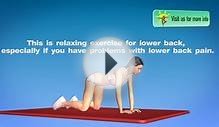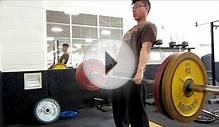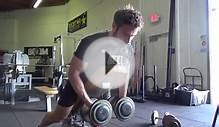
Lower back pain after workout
Lev Borukhov, DPT is the founder and co-owner of Movement Minded PhysioTherapy in New York City. He also is a certified Functional Movement Specialist, Functional Taping Specialist, and Kettle Bell Athletics coach.
Q: What could be the cause of my lower back being sore after I workout?
Lev Borukhov: Several different factors can be attributed to low back pain. It could be tissue tightness, improper lifting form, too much weight or improper posture. If you plan on doing a compound barbell movement, you’ll need to do a movement preparation session with dynamic movements and soft tissue work beforehand and many people don’t do that.
How would I properly recruit the core in the squat?
Do a movement preparation session prior to squatting, which would include bodyweight squats, hip stretches to open up the hip and foam rolling before. During the squat, push your knees out and push with your glutes on the way up.
Breathing also is very important for core recruitment. If you’re squatting for higher reps, exhale on exertion and if you’re trying to lift heavier for lower reps, utilize the valsalva maneuver. This increases the pressure in the plueral cavity (space between lungs and inside of chest wall) to help you stabilize and squat better.
How should I relieve my lower back pain?
Get into a good posture–have your head on top of your rib cage and rib cage on top of your pelvis. That usually will relieve some of it. Also, try squeezing your glutes, and stretching your hip flexor and hamstrings.
Foam rolling on the thoracic spine and glutes, not on the lower back itself, tends to help if the pain wasn’t severe to begin with. If used on the lower back, a foam roller can drive your spine into hyperextension and possibly cause you more pain.
If you have pain shooting into your glutes, shooting into one leg, or you feel numbness or tingling, these tips won’t help much and you should probably go see a health care professional.
What stretches would I do for the hip flexor and hamstrings?
For hamstrings, do a lying hamstring stretch in which you use a towel or a band and bring your leg up. For hip flexor, get into a lunge position with the back knee on the ground. Squeeze the front glute and push it forward.
Another hip stretch is the pigeon stretch. Take your leg, put the outside of your knee on the ground in front you so your leg is horizontal. Bring the other leg straight back. This works the external rotators in the hip.
What are some exercises I can do to strengthen my lower-back and prevent injury even if I’m not already in pain?
Plank variations such as a bird-dog plank or three-point plank fire the core and many other stabilizers. If you have access to a stability ball, do “stir the pot” you rotate your elbows on the ball in one direction then rotate them into another direction while you plank. Kettlebell swings are also very helpful for strengthening the lower back in comparison to move where you’re bent over.
INTERESTING VIDEO



Share this Post
Related posts
Banana after workout
You went to depth on every squat rep and pushed your reverse lunges to failure. Your quads are beat and your hamstrings burn…
Read MoreEating carbs after workout
Ask the Get-Fit Guy: Should You Eat Carbs After a Workout? Q: Listener Rosalie recently wrote in with a great question that…
Read More









